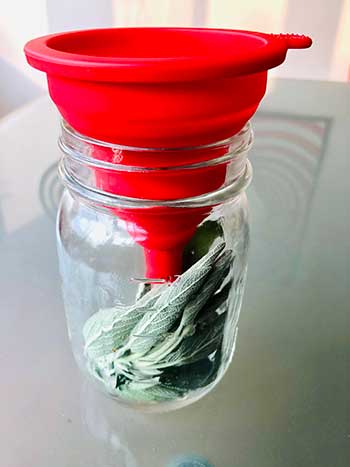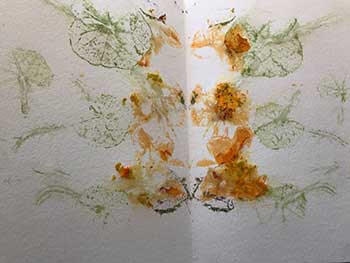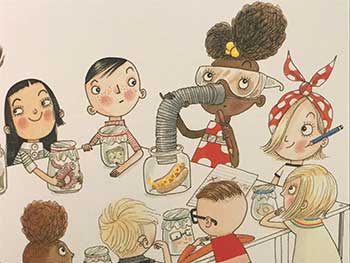
Story Time - Ada Twist, Scientist
Activity 1: Smell-a-thing-thing

Ada is an inventive scientist who never stops asking questions and wanting to learn about the mysteries of the universe, including answers to questions of utmost importance, such as: "what on Earth is that smell?"
Make your own invention for smelling, a smell-a-thing-thing, inspired by Ada’s creation. We made one from a funnel and an old jam jar.
Become a scientist and use your senses to make discoveries. What kinds of smelly delights lurk around your home? Collect different smelly things and put them inside a jar or container. For example, you could choose spices from your kitchen, cookies, cheese, plastic toys, ripe bananas, or anything else you can find at home. If you’re feeling really adventurous, give your dirty sock a sniff!
A hypothesis is a guess that scientists make about what will happen during their experiment. This guess is usually based on information they already know or what they think is likely to happen. Take a moment to guess which smells you will like and write down or talk about your hypothesis with friends or family. Do you have a hypothesis about which smell you will like the best? Rank each jar from your collection of smells from 1 to 5, with1 being “this smells delicious,” and 5 being “what a toe-curling stench.” Now smell away!
Did some of your numbers surprise you? Was your hypothesis correct—did you like the smell you thought you would? Was there a smell that you ranked both delicious and stinky at the same time (stinky things can be delicious too!).
The “giant stinky plant,” or Amorphophallus Titanum, smells like rotting meat because that’s what smells delicious to the insects that pollinate it. As the meaty bloom opens, the plant releases powerfully stinky chemicals into the air. This makes it easier for pollinators, insects such as sweat bees and flies, to find the bloom. While the insects are snacking on pollen, they are helping the giant stinky plant reproduce, or have baby stinky plants.
Share your smell-a-thing-thing creation and your smell experiment with us at #TheHatHome.
Activity 2: Smell-good Paper

Create your own “smell-good paper” by pounding fragrant plants, such as fresh herbs, into a thick paper that you can use for art projects, or as cards. You could also make “smell-good paper” with vanilla extract, essential oils, or perfume.
- Find a flat surface to do this project. The floor is ideal.
- Find a thick piece of paper.
- Fold your paper in half and place your plants inside the fold. We chose peppery and bright nasturtiums.
- Ask an adult to help you with pounding the plants into the paper. You can use a rubber mallet, a hammer (carefully) or anything that you and your adult helper can agree upon.
- Scrape off the remains of plant leaves and flowers and scratch and sniff your “smell-good paper.” Smell away!
Activity 3: Ask a Preservation Professional

Kate: Jazmin, what kind of smells are you looking out for when you’re preserving objects and keeping them safe for the future?
Jazmin: This is an excellent question. When I am walking through our collection areas, I am using my nose to help detect weird smells that we don’t want around the materials. For example, moldy smells may indicate that water is present. So, my department works with the Facilities team to get to the bottom of it.
On the other hand, I love smelling delicious food, but I don’t want to smell that when I am among our rare books and art collections. The tiniest crumbs of food can attract insects, and some bugs really like to eat paper or the starchy components that help to hold books together.
So, if I smell something, I go on a quest to solve the puzzle, like Ada Twist, Scientist does. My nose helps me to keep the collection safe.
Interested in learning more about interesting smells at The Huntington? Check out our own Stinky Plant.